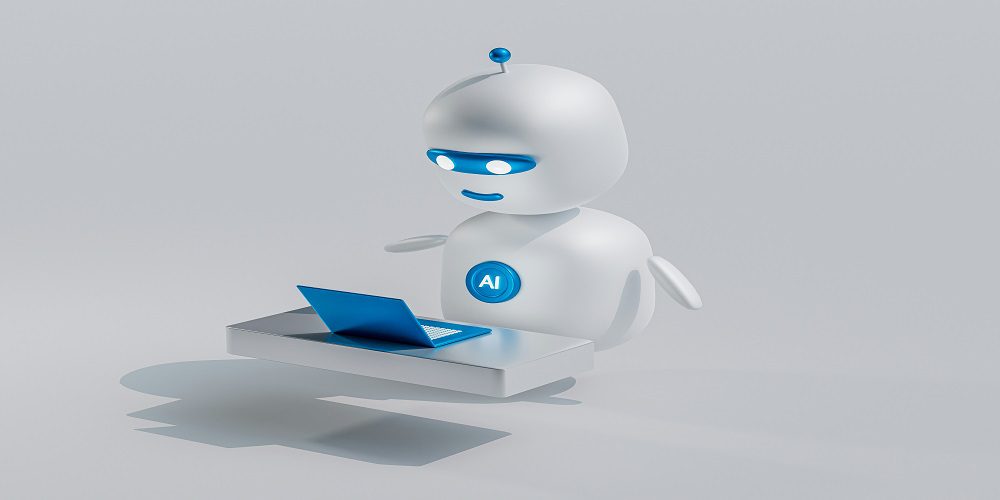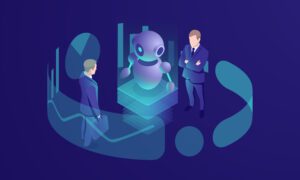Introduction
Welcome to a world where virtual assistants and chatbots seamlessly weave into our daily lives, transforming how we engage with technology. From the familiar voices of Siri and Alexa to the helpful bots on websites, these intelligent entities owe their capabilities to the driving force of artificial intelligence (AI). In this article, we’ll unravel the intricate mechanics of AI and explore how it fuels virtual assistants and chatbots, reshaping our digital interactions.
AI and the Evolution of Virtual Assistants/Chatbots
Artificial intelligence (AI) has taken center stage in recent years, with applications ranging from self-driving cars to advanced voice recognition. Among its prominent applications are virtual assistants and chatbots, which are omnipresent in our daily routines. This section will delve into the essence of AI and its role in powering these intelligent systems.
Grasping the Fundamentals of AI Technology
AI, a rapidly advancing technology, has significantly impacted virtual assistants and chatbots. These systems enhance our technological interactions by simplifying tasks. But what exactly is AI, and how does it empower virtual assistants and chatbots? This section will demystify the basics of AI technology, outlining its role in these groundbreaking tools.
At its core, AI is a branch of computer science dedicated to creating intelligent machines capable of tasks that traditionally demand human intellect. This encompasses problem-solving, decision-making, learning, and language comprehension. The objective is to develop machines that emulate human thinking, utilizing algorithms and data for informed decision-making.
A pivotal element of AI is machine learning, which grants computers the ability to learn from vast datasets without explicit programming for each task. Machine learning algorithms employ statistical models, continually refining their performance by identifying patterns in the data. This adaptive learning enables virtual assistants and chatbots to evolve and provide more precise responses over time.
AI Integration in Virtual Assistants and Chatbots
Virtual assistants and chatbots, omnipresent in our lives, have redefined how we interact with technology. But how does AI seamlessly integrate into these entities? Let’s explore the mechanics behind this integration.
1. Natural Language Processing (NLP)
Central to AI’s role in virtual assistants and chatbots is natural language processing (NLP). This technology empowers machines to interpret and analyze human speech, mirroring human understanding. Trained on extensive datasets, NLP algorithms discern the context, syntax, grammar, and meaning behind spoken or written words. This enables virtual assistants to comprehend user commands, providing relevant responses while continuously learning from interactions to enhance their intelligence.
2. Machine Learning
An integral aspect of AI integration in virtual assistants and chatbots is machine learning. This technology involves training algorithms on extensive datasets to recognize patterns, make predictions, and improve performance over time without explicit programming for each scenario. In the context of virtual assistants and chatbots, machine learning refines their understanding and response capabilities by learning from user interactions, resulting in personalized and efficient engagements.
3. Integrating APIs
Application Programming Interfaces (APIs) play a vital role in the fusion of AI with virtual assistants and chatbots. These interfaces enable seamless access to information from diverse sources, such as weather data or restaurant menus, enriching their responses.
Advantages of Employing AI in Virtual Assistants and Chatbots
The incorporation of artificial intelligence (AI) has elevated the functionality of virtual assistants and chatbots, rendering them more sophisticated and efficient. This section will elucidate the diverse benefits derived from integrating AI into these intelligent systems.
1. Enhanced User Experience
AI empowers virtual assistants and chatbots to deliver personalized and seamless user experiences. Advancements in Natural Language Processing (NLP) and Machine Learning (ML) enable these systems to understand human language, context, and intent, resulting in accurate responses and an improved user experience.
2. 24/7 Availability
Unlike human agents with limited work schedules, AI-driven virtual assistants and chatbots ensure round-the-clock availability. This accessibility ensures that users receive prompt assistance and solutions to their queries at any time.
3. Increased Efficiency
AI-powered systems exhibit high efficiency, handling multiple conversations simultaneously without delays or errors. Their access to vast datasets enables quick retrieval of relevant information, facilitating the accurate completion of tasks.
4. Cost savings
Automation of routine tasks through AI-powered virtual assistants and chatbots translates to significant cost savings for businesses. The ability to handle a large volume of inquiries concurrently reduces the need for additional human agents, minimizing labor costs.
5. Personalization
AI enables virtual assistants and chatbots to collect and analyze user data, facilitating personalized recommendations and solutions. This personalized approach enhances user engagement by providing relevant and tailored experiences.
Real-life Examples of AI-Powered Virtual Assistants and Chatbots
Virtual assistants and chatbots, once futuristic concepts, are now integral parts of our daily lives. This section will showcase real-life examples of how AI propels these technologies.
1. Google Assistant
Introduced in 2016, Google Assistant utilizes AI technology for voice recognition, natural language processing, and machine learning. It performs diverse tasks, such as answering questions, setting reminders, playing music, and controlling smart home devices through voice commands.
2. Amazon Alexa
Amazon’s virtual assistant, Alexa, employs AI to comprehend and respond to user queries. Similar to Google Assistant, it executes tasks like setting alarms, playing music, and ordering products through voice- or text-based interactions.
3. Apple Siri
Siri, Apple’s virtual assistant, integrates AI techniques like natural language processing to interpret user requests and execute tasks such as making calls or sending messages.
Limitations and Challenges of AI in Virtual Assistants and Chatbots
While AI has propelled virtual assistants and chatbots to new heights, challenges persist. This section will outline the limitations and challenges these AI-powered tools face.
1. Natural Language Processing (NLP) Limitations
AI’s progress in NLP, while significant, falls short of human-level comprehension. This can lead to the misinterpretation of user queries, resulting in inaccurate responses.
2. Context Awareness Challenges
AI algorithms struggle with context awareness, often providing responses without considering the broader context. This limitation can lead to irrelevant or unhelpful interactions.
Future Possibilities for AI in Virtual Assistants and Chatbots
The future of AI in virtual assistants and chatbots holds exciting possibilities. This section will explore emerging developments that promise more advanced and intelligent interactions between humans and machines.
Enhanced Natural Language Processing (NLP)
Anticipate the integration of advanced NLP capabilities, enabling virtual assistants and chatbots to grasp human speech patterns, dialects, slang, and context more accurately. This enhancement will pave the way for more relevant responses and natural conversations.
Conclusion
In recent years, artificial intelligence (AI) has emerged as a transformative force across diverse industries. Nowhere is its impact more pronounced than in virtual assistants and chatbots, where it has reshaped the dynamics of human-technology interactions. As we traverse this era of AI-driven innovation, the future promises even more remarkable advancements, unlocking unprecedented levels of sophistication and intelligence in our virtual companions.



































